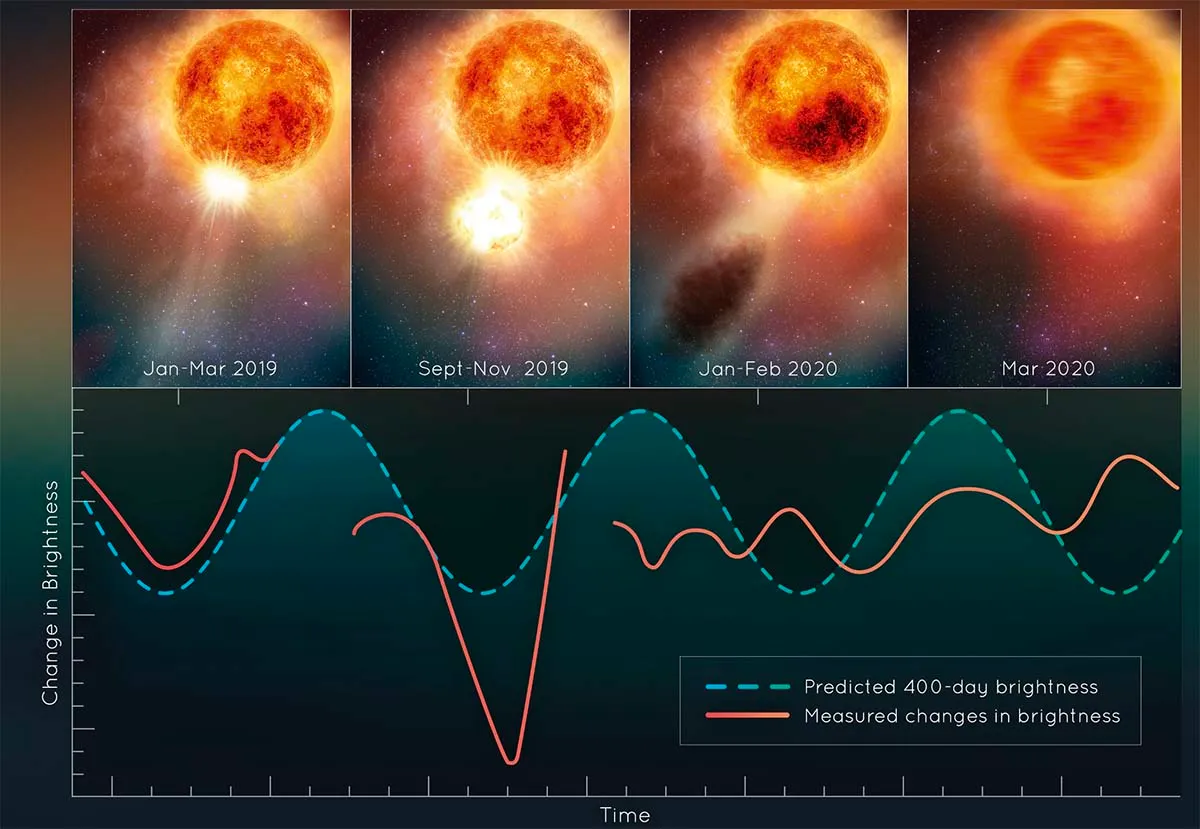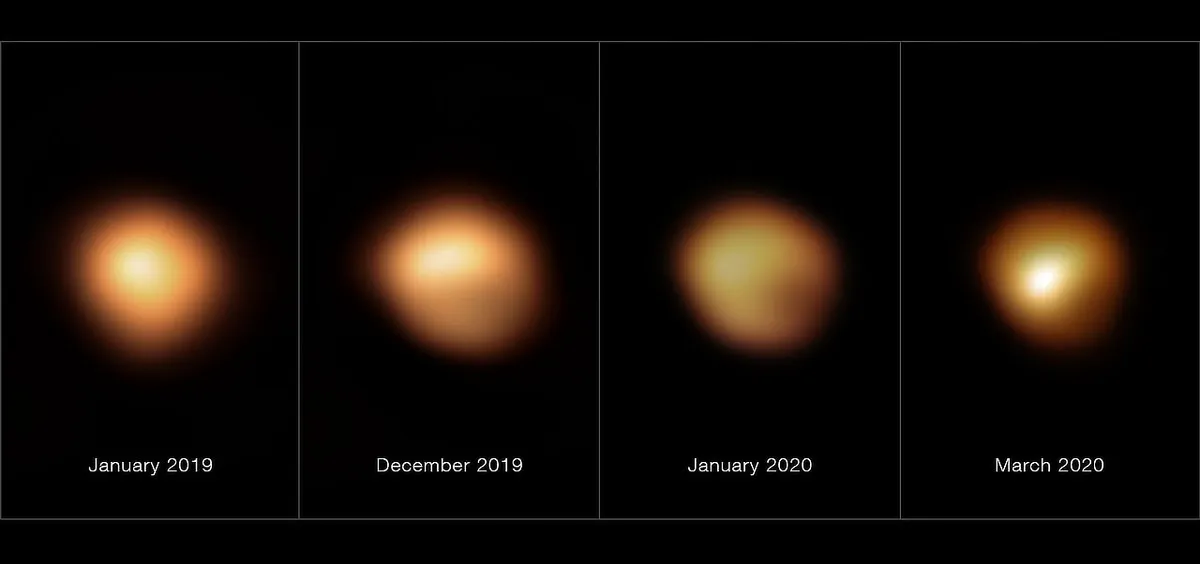Three years ago, amateur astronomers around the world watched as the usually bright light of Betelgeuse dimmed overnight and remained that way for several months.
Now a group of astronomers have determined that Betelgeuse's dimming was caused by a piece of the star’s atmosphere being ejected into space.
"We’ve never before seen a huge mass ejection of the surface of a star," says Andrea Dupree from the Center for Astrophysics, Harvard and Smithsonian, who led the study.
Betelgeuse is a red giant star over 1.6 billion kilometres wide – meaning if it replaced our Sun it would swamp Jupiter and almost reach Saturn.
It has ballooned in size as it is approaching the end of its life and will eventually go supernova.
Though this is unlikely to happen for the next 10,000 years, it gives astronomers a unique view of a star in its final centuries.

Over 200 years of observations have shown that the star’s brightness slowly pulses according to a 400-day cycle, but the scale and speed of the 2019 dimming was unprecedented.
Drawing together observations from all over the world, Dupree has determined that material bubbling up within the star blasted off a piece of the photosphere.
The ejection had a mass several times that of our Moon – a colossal 400 billion times more than what our Sun typically gives off during coronal mass ejections.
As this fractured piece cooled, it formed a dust cloud that blocked Betelgeuse’s light from Earth, causing it to appear dimmer.
It also appears that Betelgeuse’s 400-day brightness cycle has stopped, or at least paused.

Spectral observations from the Hubble Space Telescope taken by Dupree showed signs that this event and the star’s attempts to rebuild its photosphere have disrupted the internal motions that drive the cycle.
"Betelgeuse continues to do some very unusual things right now; the interior is sort of bouncing," says Dupree.
"We’re left with something we don’t completely understand. It’s a totally new phenomenon that we can observe directly and can resolve surface details with Hubble. We’re watching stellar evolution in real time."
The team will continue to observe the red giant and hope to use the James Webb Space Telescope to watch as the cooling material moves away from the star.
